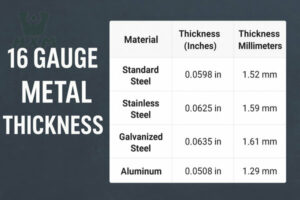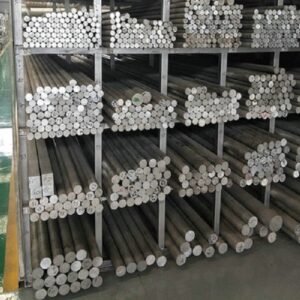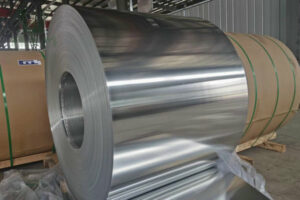In industrial manufacturing, the choice of aluminum brazing and welding wire can make the difference between a strong, long-lasting joint and a costly repair.
For industries like HVAC, automotive, marine, and construction, selecting the right alloy and diameter is critical to ensuring structural integrity, corrosion resistance, and productivity.
Understanding Aluminum Brazing & Welding Wire
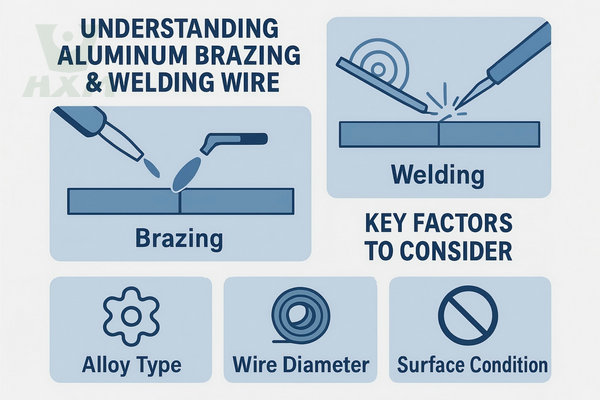
Aluminum brazing wire is primarily used to join aluminum components at lower temperatures than welding, making it suitable for heat exchangers and thin-walled pipes.
Aluminum brazing wire is designed for fusion welding processes such as TIG and MIG, which require a high-strength bond.
Key Selection Factors for Aluminum Brazing & Welding Wire
Alloy Type
Different alloys offer unique properties:
| Alloy | Melting Range (°C) | Features & Benefits | Typical Applications |
|---|---|---|---|
| 4047 | 577–582 | Low melting point, excellent fluidity, leak-tight joints | HVAC, refrigeration, brazing |
| 4043 | 566–582 | Good corrosion resistance, smooth bead appearance | Automotive body panels |
| 5183 | 535–595 | High strength, good toughness at low temperatures | Marine structures |
| 5356 | 566–632 | Excellent corrosion resistance, high tensile strength | Shipbuilding, truck frames |
| 5556 | 541–636 | Superior saltwater resistance | Offshore equipment |
Wire Diameter
Thinner wires (0.8–1.0 mm) for precise, low-heat applications.
Thicker wires (1.6–2.0 mm) for heavy-duty welding with higher deposition rates.
Surface Condition
Clean, flux-free wire for TIG and MIG welding.
Flux-coated wire for certain brazing applications, eliminating the need for separate flux application.

Common Industrial Applications
HVAC & Refrigeration – Brazing aluminum to copper or aluminum tubes in heat exchangers.
Automotive – Welding suspension frames, radiators, and aluminum body panels.
Marine & Shipbuilding – Fabricating ladders, railings, and structural parts exposed to saltwater.
Architectural Projects – Joining aluminum frames, panels, and railings in construction projects.
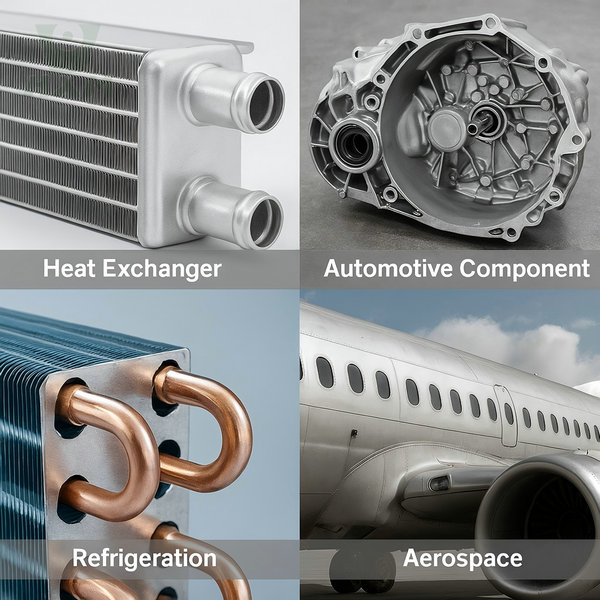
How to Match Wire to Your Project
| Industry | Recommended Alloy | Main Benefits |
|---|---|---|
| HVAC | 4047 | Low melting point, high fluidity, leak-free joints |
| Automotive | 4043 / 5183 | High corrosion resistance, good weldability |
| Marine | 5356 / 5556 | Superior saltwater corrosion resistance |
| Construction | 4043 / 6061 rod | Strong welds with architectural finish |
nderstanding the Difference Between Brazing and Welding
Brazing and welding both join metals but differ in process and results:
Brazing uses a filler metal with a melting point lower than the base metals. The filler flows into the joint via capillary action, creating a strong bond without melting the base parts. This is ideal for joining thin-walled components like HVAC tubes or delicate assemblies.
Welding melts both the filler and base metal, producing a fusion joint. This is suited for structural applications where high tensile strength is required.
Why Work with a Professional Supplier
Partnering with a reliable aluminum brazing & welding wire supplier ensures:
Consistent alloy quality and certification (ISO, RoHS)
Custom diameters and packaging for your production line
On-time delivery and global logistics support
Technical advice for alloy selection and process optimization
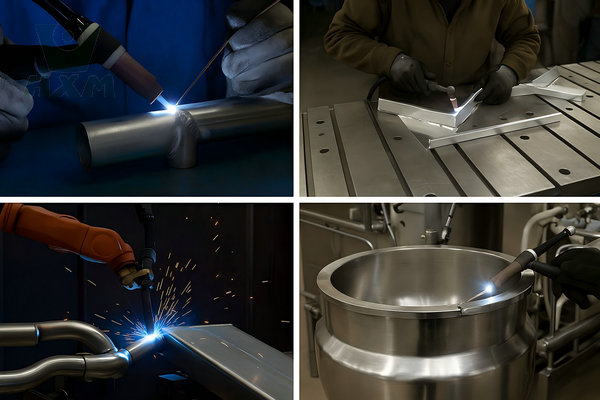
Conclusion
The right aluminum brazing or welding wire improves production efficiency, joint strength, and long-term performance.
If your project requires high-quality, certified alloy wire, HXM Aluminum can supply the right product with competitive pricing and flexible order quantities.
📩 Contact us today for technical specifications, samples, or bulk quotations:

